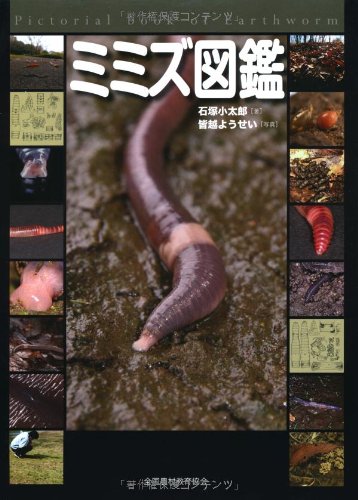- 著者
- 渋谷 茂一 石塚 春雄 亀島 昭徳 木下 敏雄 安藤 秀哉 吉村 和昭 鈴木 喬 賀来 壽一 海野 幸次郎
- 出版者
- 一般社団法人電子情報通信学会
- 雑誌
- 電子情報通信学会技術研究報告. A・P, アンテナ・伝播
- 巻号頁・発行日
- vol.97, no.228, pp.1-8, 1997-08-22
- 被引用文献数
- 23
何百光年もの遠い星が輝いて見えるのは、星から地球えの光の伝達形式が吸収や屈折や散乱のない「自由空間伝搬」のおかげである。人工的な無線通信で自由空間伝搬に最も近いのは、衛星間と衛星地球間の通信で、良質安定な通信品質が得られる。自由空間伝搬を、地上通信に応用するには、地球表面(大地)の反射と回折の影響と大気の屈折効果を「実用上の自由空間伝搬条件」の限度内に抑制する必要がある。1960年以降、日本のマイクロ波中継システムが、世界各国に広く輸出されて重要な幹線用に採用されたのは、「自由空間伝播路設計法」のノーハウを駆使して、高品質な中継システムの提供に成功したからにほかならない。われわれは、この貴重な経験を「自由空間型EMCテストサイト」の実現に役立てるべく、研究開発を重ねて来た。その結果、VHF・UHF・SHF・EHF以上(30MHz〜400GHz)の周波数帯域に広く適用でき、測定距離(0.5m〜10m)を任意に選択できるUniversal(万能)なUtility Test site(UUTS/U site)の実用化に成功した。本論文は、EMCテストサイトに実用上要求される「自由空間伝搬の条件」と「自由空間化の方法」、「Universal Site」の実施例について述べる。
2 0 0 0 イモリ嚢胚オルガナイザーの誘導能と代謝(発生)
- 著者
- 鈴木 明郎 石塚 駿太
- 出版者
- 社団法人日本動物学会
- 雑誌
- 動物学雑誌 (ISSN:00445118)
- 巻号頁・発行日
- vol.76, no.11, 1967-12-15
1、実験工作キャラバン隊ボランティア団体「実験工作キャラバン隊」を組織し、地域の小中学校、教育委員会、子ども会等の要請に応じて出かけていき、実験工作教室を開いた。平成17〜18年度中の開催回数は51回、参加学生は延べ352人、教職員は延べ87人で、参加した児童生徒は1849人であった。この児童生徒数には、科学まつりや大学祭等、大きな催しの中の1つの出し物として参加した場合に指導した児童生徒数を含めていないので、学生達が実際に指導した児童生徒数は更に2000人程度増加すると思われる。活動の様子はホームページに公開した。また、レーザープリンタを使って実験工作の説明資料を作り参加児童生徒に配布した。参加した児童生徒の95%が「大変おもしろかった」または「おもしろかった」と答えており、子ども達に科学に親しむ場を提供する上で大きな成果があった。参加学生達も自分たちの「子どもを指導する力」、「子ども達との接し方」が向上したと感じており、教員養成の面でも大きな成果があった。また、いくつかの実験テーマを選び、その学問的基礎、実験方法、実験装置の作成方法、授業展開例、等をまとめたパンフレットを作り学生教育の充実を図った。2、サイエンス・ものづくり指導実習実験工作キャラバン隊の活動を、正規の教員養成カリキュラムに取り入れるため、平成17年度から「教科または教職」科目の1つとして「サイエンス・ものづくり指導実習」(通年集中、2単位)を開設している。平成17、18年度に携わった教員9人、受講生は合計27人であった。学生達は4月から7月の問に「実験工作キャラバン隊」の出向に参加し、実験工作教室を体験した。そして、11月から12月の間に小学校、中学校に出かけていき、各人5時間以上の理科実験やものづくりに関する授業を行った。学生達は、授業する力、子ども達と接する力、実験ものづくりの授業を企画する力等が向上したと評価している。最後に協力校の教諭とのシンポジウムを開き、この授業が学生の実践的指導力を付ける上で大変有効であることが分かった。
- 著者
- 淡野 公一 石塚 興彦 唐 政
- 出版者
- 一般社団法人電子情報通信学会
- 雑誌
- 電子情報通信学会論文誌. A, 基礎・境界 (ISSN:09135707)
- 巻号頁・発行日
- vol.79, no.7, pp.1244-1255, 1996-07-25
- 被引用文献数
- 2
以前に提案されている電流モードCM0Sアナログデファジー回路は, M0Sトランジスタのプロセスパラメータの絶対値の変動に対して低感度であり, 多入力化の容易な回路であった. しかしながら, この回路は, 同一入力電流の向きが異なる, 入力バイアス電流が必要なため消費電力の増加を招く等の問題があつた. 前者に関しては, 入力電流の向きを変えるには, 一般にカレントミラーが用いられる. このカレントミラーは, チャネル長変調効果の影響を受けるためデファジー回路の入力以前に誤差を生じてしまう, 本論文では, 最初にデファジー回路を構成するための4象限動作可能な電流モードCMOSアナログ乗算器を提案する. 提案する乗算器は,従来の回路と同様にプロセスパラメータの絶対値の変動に対して低感度であり, 更に, 前述の問題を改良した回路構成となっている. 次に, 提案する乗算器を用いて多入力化が容易なデファジー回路を設計する. 提案するデファジー回路は, バイアスブロックの共通化によって低消費電力化に有利な回路構成となっている. これらの回路は, PSpiceを用いて詳細に解析される. 最後に, 提案するデファジー回路の評価を行い, その有効性について検討する.
2 0 0 0 OA 日本語テキストからの感情抽出
- 著者
- 菅原 久嗣 Neviarouskaya Alena 石塚 満
- 出版者
- 人工知能学会
- 雑誌
- 人工知能学会全国大会論文集 (ISSN:13479881)
- 巻号頁・発行日
- vol.23, 2009
構文解析や形態素解析を行ない、同時に文中に出現する感情語がどの程度文全体の感情に寄与しているかを算出する事で、日本語のテキストから感情を抽出する手法を提案する。
- 著者
- 大野 貴弘 金井 圭介 石塚 宏紀 戸辺 義人
- 出版者
- 一般社団法人電子情報通信学会
- 雑誌
- 電子情報通信学会総合大会講演論文集
- 巻号頁・発行日
- vol.2009, no.1, pp."S-39"-"S-40", 2009-03-04
2 0 0 0 都市情報センシングシステムの提案
- 著者
- 金井 圭介 大野 貴弘 石塚宏紀 伊藤花乃子 澤 義和 三尋木織 戸辺 義人
- 出版者
- 一般社団法人情報処理学会
- 雑誌
- 情報処理学会研究報告ユビキタスコンピューティングシステム(UBI) (ISSN:09196072)
- 巻号頁・発行日
- vol.2008, no.18, pp.141-148, 2008-02-27
生活を支援するという点で一番身近であることからオフィス,ホームがユビキタスコンピューティングの対象として取り上げられることが多かった.今後は,生活空間の延長である都市全体をすっぽりと包んで,屋内と屋外とがシームレスにユビキタスコンピューティングで自由に行き来できる世界を構築したいと我々は考える.それに伴い,コンピュータで処理できる情報を取得する過程で必要とされるセンシングも,都市全体をカバーする領域へと拡大する.我々はこれをアーバンセンシングと呼ぶ.本稿では,アーバンセンシングの第一歩となる取組みについて述べる.Offices and Homes have been a main target for ubiquitous computing because these are the closest to our daily lives. We hope to construct a world of ubiquitous computing in the city in such a way that we can move back and forth between indoor and outdoor seamlessly. To achieve that goal, we need to extend sensing to the whole area of a city, which is referred to as urban sensing. In this paper we describe the first step towards urban sensing.
1 0 0 0 OA 外傷性腎被膜下リンパ嚢腫に伴うPage kidneyの1例
- 著者
- 皆川 倫範 加藤 晴朗 杵渕 芳明 山口 建二 古畑 誠之 矢ヶ崎 宏紀 石塚 修 井川 靖彦 西沢 理
- 出版者
- 一般社団法人 日本泌尿器科学会
- 雑誌
- 日本泌尿器科学会雑誌 (ISSN:00215287)
- 巻号頁・発行日
- vol.100, no.6, pp.646-649, 2009 (Released:2012-02-01)
- 参考文献数
- 9
17歳男性.空手の練習中に右側腹部を蹴られたのち肉眼的血尿を認めた.CTで右腎被膜下出血を認めた.出血は軽微であり, 経過観察とした.1カ月後のCTで, 右腎周囲に腎実質を圧迫する嚢胞性病変を認めた.このころから血圧が徐々に上昇し, 160/80mmHgとなった.超音波ガイド下経皮的嚢胞穿刺を施行し, 茶褐色透明な液体を吸引した.内容液はリンパ液で, 穿刺後に血圧は低下したが, 嚢胞内容は再貯留し, 血圧が再上昇した.以上の経過から, 外傷性腎被膜下リンパ嚢腫に伴うPage kidneyと診断した.腹腔鏡下リンパ嚢腫開窓術を施行した.術後, 血圧は低下した.しかし, 手術1カ月後のCTで液体の再貯留を認め, 血圧の上昇を認めた.再手術を薦めたが, 本人の希望がなく, 現在降圧剤内服で保存的に加療中である.
1 0 0 0 OA 革新的な腸管発酵制御法:腸内細菌の嫌気呼吸の促進による発癌性二次胆汁酸生成の抑制
大腸癌のリスク因子として大腸内に生成される発がん性二次胆汁酸が知られている.本研究では,腸内細菌による胆汁酸の還元的代謝により生成される発がん性二次胆汁酸を低減させる新しい手法として,腸内細菌の嫌気呼吸を促進させ,胆汁酸の酸化的代謝を活性化させることを試みた.そこでラットにフマル酸を添加した飼料を摂取させ,盲腸内の嫌気呼吸の誘導を試みたところ,代表的な発がん性二次胆汁酸であるデオキシコール酸の低減可能性は示された.しかし,5~10%と高濃度のフマル酸添加必要であり,この濃度ではラットが下痢を起こすことから、実用的な抑制にはフマル酸のカプセル化等,添加方法の検討が必要である.
1 0 0 0 OA 日本企業にみる攻撃戦略
- 著者
- 石塚 浩 恩蔵 直人
- 出版者
- 日本マーケティング学会
- 雑誌
- マーケティングジャーナル (ISSN:03897265)
- 巻号頁・発行日
- vol.15, no.3, pp.42-54, 1995-12-20 (Released:2023-12-19)
- 参考文献数
- 21
- 被引用文献数
- 1
- 著者
- 富江 敏尚 石塚 知明
- 出版者
- 国立研究開発法人 産業技術総合研究所
- 雑誌
- Synthesiology (ISSN:18826229)
- 巻号頁・発行日
- vol.9, no.4, pp.216-234, 2016 (Released:2016-12-14)
- 参考文献数
- 38
レーザープラズマ光源の最有望応用技術として極端紫外光励起光電子分光法、EUPS、の原理を考案してから、4半世紀が過ぎた。最表面原子層の超微量汚染の検出、バンド曲がり、表面のキャリア密度の評価、導電率の評価等、他の手法では困難な分析がEUPSで可能になっており、触媒活性との良い相関が得られるなど、材料の有用な分析手段になっている。ユーザーの課題解決のために生まれた分析法が多く、ユーザーによりEUPSが高度化されたと言える。EUPSの着想に至るまでの経緯、実用装置にするための要素技術の選定と構成、従来の光電子分光にはない新たな分析法を可能にしたのはEUPSのどのような特徴によるか、などを記述した。
1 0 0 0 OA ベーメからフォイエルバッハへ 〔メソバース〕を介して
- 著者
- 石塚 正英
- 出版者
- 特定非営利活動法人 頸城野郷土資料室
- 雑誌
- 頸城野郷土資料室学術研究部研究紀要 (ISSN:24321087)
- 巻号頁・発行日
- vol.8, no.13, pp.1-14, 2023 (Released:2023-11-30)
1 0 0 0 OA 自然と超自然の緩衝域を考える―メソバース(時空中間域)の想定
- 著者
- 石塚 正英
- 出版者
- 特定非営利活動法人 頸城野郷土資料室
- 雑誌
- 頸城野郷土資料室学術研究部研究紀要 (ISSN:24321087)
- 巻号頁・発行日
- vol.8, no.12, pp.1-10, 2023 (Released:2023-11-11)
1 0 0 0 OA 胆汁酸分子種の多様性 構造・代謝と生理作用
- 著者
- 石塚 敏
- 出版者
- 公益社団法人 日本農芸化学会
- 雑誌
- 化学と生物 (ISSN:0453073X)
- 巻号頁・発行日
- vol.52, no.5, pp.301-306, 2014-05-01 (Released:2015-05-01)
- 参考文献数
- 10
- 被引用文献数
- 2 1
古くは大腸がん発症,最近ではメタボリックシンドロームとの関係で注目される胆汁酸には多様な分子種が存在し,その生理作用は分子種により大きく異なる.胆汁酸は肝臓で合成され,脂質の吸収に関与する両親媒性のステロイドである.胆汁を介して消化管腔内へ分泌された胆汁酸は,腸内細菌により脱抱合や二次胆汁酸への変換を受ける.胆汁酸は腸内細菌による代謝を受けるだけでなく,胆汁酸の存在が腸内細菌の存在にも影響を及ぼすという相互関係がある.一方で,胆汁酸分子は宿主でのさまざまな代謝調節に関与することが明らかになった.本稿では,胆汁酸の構造と代謝,腸内細菌への作用と食事条件による影響,メタボリックシンドロームなどの病態生理を解析するうえで考慮すべき点などについて概説する.
1 0 0 0 OA CIS系太陽電池の研究開発動向
- 著者
- 石塚 尚吾
- 雑誌
- 日本化学会 第103春季年会 (2023)
- 巻号頁・発行日
- 2023-01-16
1 0 0 0 OA 北海道北部, 利尻火山の形成史
- 著者
- 石塚 吉浩
- 出版者
- 特定非営利活動法人 日本火山学会
- 雑誌
- 火山 (ISSN:04534360)
- 巻号頁・発行日
- vol.44, no.1, pp.23-40, 1999-03-05 (Released:2017-03-20)
- 参考文献数
- 47
- 被引用文献数
- 8
Rishiri volcano is situated off the northern coast of Hokkaido, Japan. Based on mode of eruption, migration of main vents, petrological features of the eruptive products and new K-Ar ages, the activity of the volcano can be divided into three main stages: Early, Middle, and Late. The Early and Late stages can each be further subdivided into two stages. The Early stage (<0.2-0.04 Ma) was characterized by the formation of a stratovolcano and flank lava domes which were aligned along a 17km-long NW-SE trend. The stratovolcano consisted of thin lava flows and pyroclastics, mainly of andesite with a small amount of basalt, whereas lava domes were dacite. During the Middle stage (ca. 0.04 Ma), thick lava flows and pyroclastics erupted from central vents and formed a main stratovolcano. The products were mainly andesite, with lesser dacite. After formation of the stratovolcano (<0.04 Ma), many flank vents (15 km-long NW-SE trend) were active in different eruption types, such as plinian, strombolian, and phreatomagmatic. The rocks were mainly basalt, with subordinate andesite and rhyolite. The most recent eruptions occurred several thousands years ago, but no volcanic activity including fumaroles can be observed at present. Eruption rate increased from >0.1 to >0.4 km3 (DRE)/ky during the Early stage, and also >0.4 km3 (DRE)/ky in the Middle stage. The rate then decreased from >0.35 to >0.09 km3 (DRE)/ky in the Late stage. Estimation of magmatic temperature was made from the presence or absence of hornblende in dacites. This suggests that magmatic temperature increased from the Early to Middle stages, and then decreased in the Late stage. Temporal variations in both eruption rate and magmatic temperature suggest that the volcanic activity of Rishiri volcano can be explained by ascent and cooling of a single heat source (diapir). Based on the diapir model and dormancy of activity during recent several thousands years, it seems that the life of Rishiri volcano as an active volcano is virtually over.
1 0 0 0 OA 1パス型属性文法に基づくコンパイラ生成系Rie
- 著者
- 佐々 政孝 石塚 治志 中田 育男
- 出版者
- 日本ソフトウェア科学会
- 雑誌
- コンピュータ ソフトウェア (ISSN:02896540)
- 巻号頁・発行日
- vol.10, no.3, pp.3_212-3_228, 1993-05-19 (Released:2018-11-05)
1パス型属性文法に基づくコンパイラ生成系Rie(りえ)について述べる.LR構文解析と同時に解析木を作らずに属性評価ができる属性文法のクラスにLR属性文法というものがあるが,Rieはそれに同値類を導入したECLR属性文法というものに基づいている.Rieは属性文法によるコンパイラの記述から1パスのコンパイラを生成する.Rieにより種々の言語処理系が開発されている.生成されたコンパイラは,手書きのものに比べて1.8倍程度の時間で動き,形式的な記述から生成されたコンパイラとしてはかなり効率がよいことが確認された.
1 0 0 0 OA 神を食べること・ベンヤミンのアウラと本物の神 〔フレイザーde書斎の煌き〕第6講
- 著者
- 石塚 正英
- 出版者
- 特定非営利活動法人 頸城野郷土資料室
- 雑誌
- 頸城野郷土資料室学術研究部研究紀要 (ISSN:24321087)
- 巻号頁・発行日
- vol.6, no.3, pp.1-22, 2021 (Released:2021-03-31)
黄砂や煙霧とともに微生物群(バイオエアロゾル)が,アジア大陸から日本へ越境輸送され,日本での環境・健康影響が懸念される。これまで,東アジア(日中韓蒙)での黄砂を捕集する高高度調査(気球, ヘリコプター)によって,越境輸送される微生物種組成は,日本海と太平洋の沿岸で大別でき,その生体影響も異なる可能性を突き止めた。しかし,従来の観測地点は日本海沿岸に偏り,太平洋沿岸へと沈着する微生物の詳細を講じる観測データは不足している。本申請では,日本本土での観測地を拡充し,「越境微生物の国内での拡散・沈着過程」を理解すると伴に,生理学実験・疫学的調査によって,生態・健康影響を評価する。


